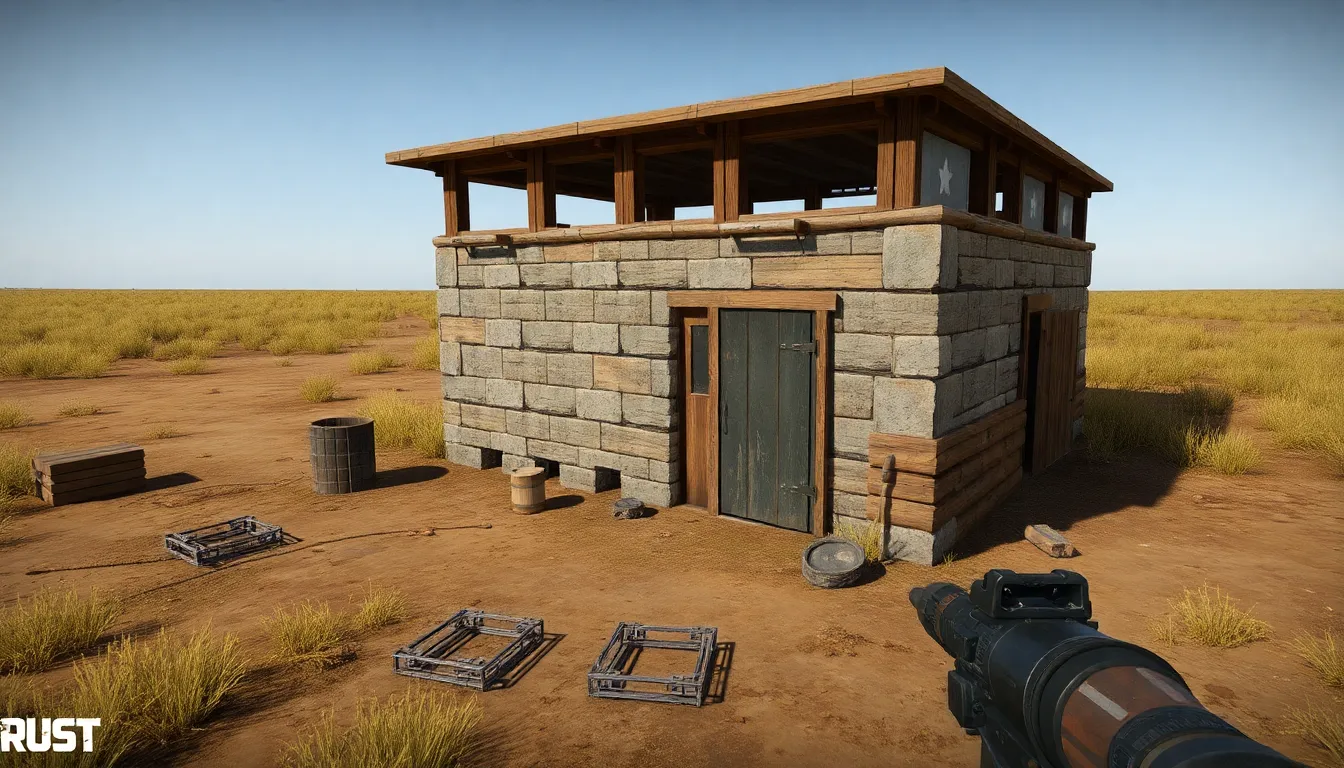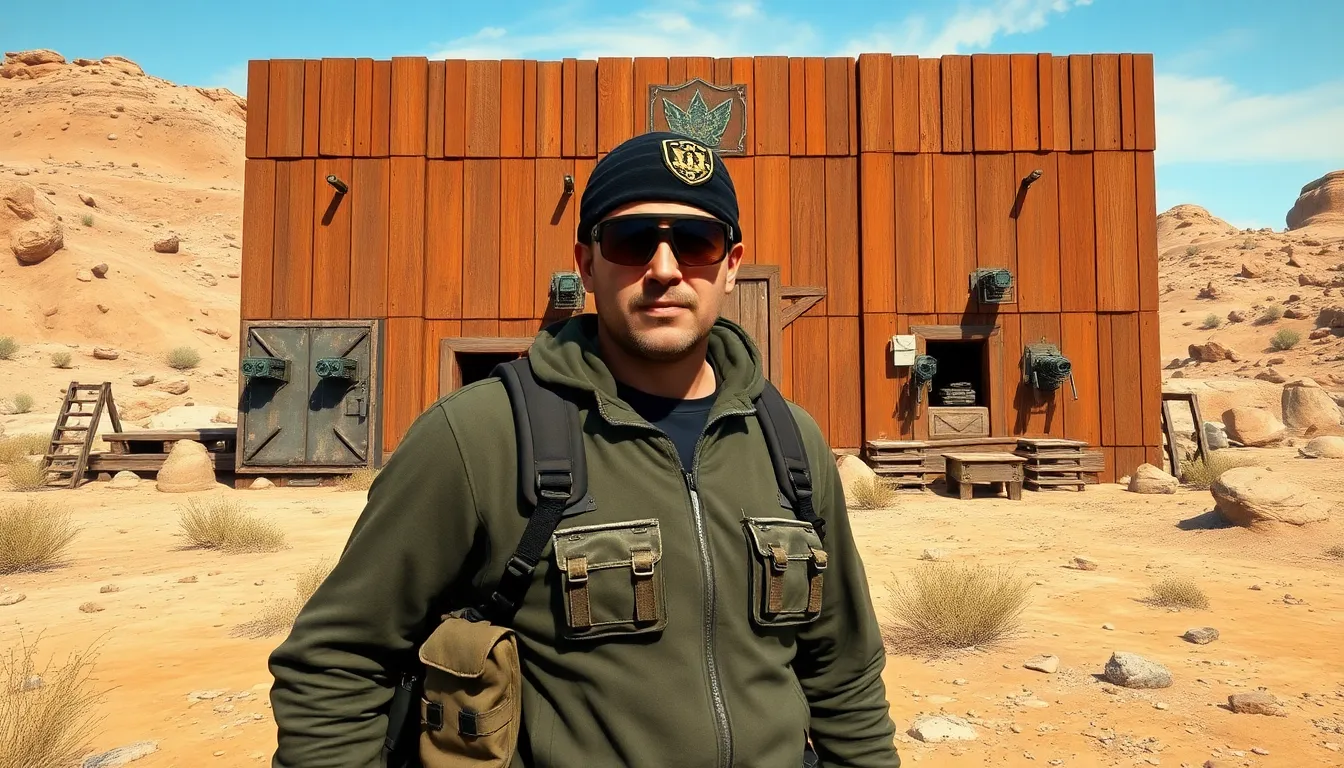Table of Contents
ToggleIn the wild world of Rust, building a base is like crafting a fortress out of spaghetti—challenging yet deliciously rewarding. Whether it’s a cozy shack or a sprawling citadel, the right base can mean the difference between survival and an embarrassing trip back to the respawn screen. With hostile neighbors lurking around every corner, mastering base building isn’t just a fun pastime; it’s a necessity for any aspiring survivor.
Overview of Rust Base Building
Base building in Rust serves as a vital component of gameplay. Players often start with a basic shelter, crafting the first walls and roof to establish safety. Building allows for both protection and storage for essential resources.
Materials used in construction include wood, stone, and metal, providing varying levels of durability. Players can gather these resources by harvesting trees, mining rocks, or raiding other players. Designing the base layout becomes crucial, as players must consider defensive strategies against raids.
Different types of bases exist, ranging from minimalistic shacks to elaborate fortresses. Each design meets unique needs based on available resources and play styles. Strong bases often include honeycombing techniques, where layered walls prevent easy access for raiders.
Upgrading structures in Rust presents additional challenges. Players must balance resource management with the desire for a more fortified base. Certain upgrades, such as reinforced doors, become necessary as one progresses in the game.
In addition to structural integrity, players must consider base location. Choosing a spot away from high-traffic areas provides a tactical advantage. Proximity to resources can enhance survival prospects but may attract unwanted attention.
Defense mechanisms like traps and turrets enhance base security. Players often invest time in learning how to create effective traps, setting up deterrents to protect their assets. Ultimately, understanding these elements transforms the way players interact with their environment. Mastering base building leads to greater success and longevity in the unforgiving world of Rust.
Key Components of Base Building

Base building in Rust involves several critical elements. Understanding these components allows players to create effective and secure shelters.
Foundation Types
Foundations serve as the base’s backbone. Players can choose between square, triangular, and hexagonal foundations. Square foundations offer simplicity and stability. Triangular foundations excel in creating unique layouts and defending against raids. Hexagonal foundations provide a larger area and flexible design options. Choosing the right foundation depends on the player’s strategy and available materials.
Walls and Doors
Walls protect against intruders and provide structural integrity. Players can construct walls using wood, stone, or metal, each offering different durability levels. Wood walls are quick and inexpensive to build. Stone walls provide greater strength but require more resources. Metal walls offer the highest protection but demand time and effort to obtain materials. Secure doors, including sheet metal, garage, and armored variants, enhance safety. A well-placed door can deter attackers and control entry points.
Roofs and Traps
Roofs complete a base and shelter inhabitants from environmental dangers. Players can install sloped roofs to efficiently manage rain and minimize flood risks. Traps, including spike traps and flamethrowers, add another layer of security. Deploying these mechanisms requires careful placement to catch unsuspecting intruders. Integrating traps into the design not only enhances security but also allows players to deter attacks without extensive resource investment.
Base Building Strategies
Effective base building strategies can enhance overall gameplay in Rust. Players must consider various approaches depending on their situation and requirements.
Solo Play Tactics
Solo players can adopt a minimalist approach to base design. Focusing on compact, efficient structures allows for quick construction and easier resource management. Choosing a secluded area reduces the risk of unwanted encounters. Simple layouts often incorporate essential elements such as a sleeping bag, a campfire, and storage boxes. Reinforcing walls with stone or metal gives extra durability against threats. Crafting multiple entry points ensures mobility and escape routes during raids. Utilizing traps in strategic locations further deters potential attackers. Employing stealth when gathering resources minimizes exposure to danger.
Team Play Tips
Team play allows for more complex and fortified bases. Collaborating with teammates enables resource pooling, which accelerates upgrades. Establishing a central command area enhances communication. Teams should prioritize honeycombing techniques to create layers of protection. Designing complementary roles, such as defenders and gatherers, optimizes teamwork. Shared storage zones keep essential items organized and accessible. Coordinating patrols around the base increases security against raids. Implementing surveillance with turrets or watchtowers adds an additional security measure. Strategic planning and collective effort result in a robust stronghold, making survival more manageable.
Common Mistakes to Avoid
Focusing on defense without considering accessibility can lead to trouble. Players often create overly complex bases that hinder movement during emergencies. Simplifying pathways ensures players can navigate quickly under pressure.
Ignoring resource management during construction leads to vulnerability. Players should gather adequate materials beforehand, as running out during upgrades or repairs exposes weak points. Planning resource allocation is essential for sustained fortification.
Neglecting base location presents risks. Building too close to high-traffic areas attracts uninvited guests. Choosing a concealed spot allows for strategic advantages while minimizing visibility to enemies.
Over-engineering designs can waste resources. Many players use excessive materials on unnecessary features, limiting essential upgrades. Prioritizing core structural integrity over extravagant aesthetics enhances overall security.
Disregarding the importance of traps, players may overlook potential threats. Installing effective mechanisms like spike traps, landmines, or turrets increases deterrence against raiders. Defensive features should complement the base’s overall design for maximum effectiveness.
Lastly, failing to communicate with team members can hinder collective efforts. Players in groups must establish roles and strategies, optimizing defense through organization. Coordinated actions bolster resilience against threats and improve survival chances.
Avoiding these common mistakes enhances base building success. Players should assess construction choices carefully, focusing on practicality and efficiency. Attention to detail in these areas leads to stronger, more secure fortifications.
Advanced Base Defense Techniques
In Rust, robust defense techniques are essential for protecting a base against potential threats. Players can implement various strategies to enhance security and deter attackers.
Traps and Turrets
Traps serve as effective deterrents against raiders. Spike traps inflict damage upon unwary enemies, while flamethrowers can create chaos in a raid. Players can optimize their trap placement by situating them in high-traffic areas, ensuring they catch intruders off guard. Automated turrets provide an additional layer of defense, often targeting foes before they breach the base’s perimeter. Investing in ammunition and maintenance for these turrets enhances their effectiveness and longevity.
External Walls and Compounds
External walls form the first line of defense against incursions. Constructing these walls with high-durability materials like stone or metal significantly increases resistance to explosive damage. Compounds allow for strategic design, providing space for additional defensive measures like watchtowers or gates. Creating multiple external layers can slow down attackers, giving players precious time to respond. Visibility can be reduced by incorporating foliage or terrain features, making bases less noticeable from a distance. Coating the outer walls with traps further fortifies the perimeter.
Base building in Rust is more than just a necessity; it’s a strategic endeavor that can define a player’s success. By mastering the art of constructing a secure and efficient base, players significantly increase their chances of survival in a challenging environment. The right materials, layout, and defensive measures can make all the difference when facing threats.
As players refine their skills and adapt to the ever-evolving landscape of Rust, they’ll discover that thoughtful design and resource management are key. Whether playing solo or as part of a team, the principles of effective base building remain the same. Embracing these strategies will not only enhance gameplay but also create a stronger foundation for thriving in the unforgiving world of Rust.










